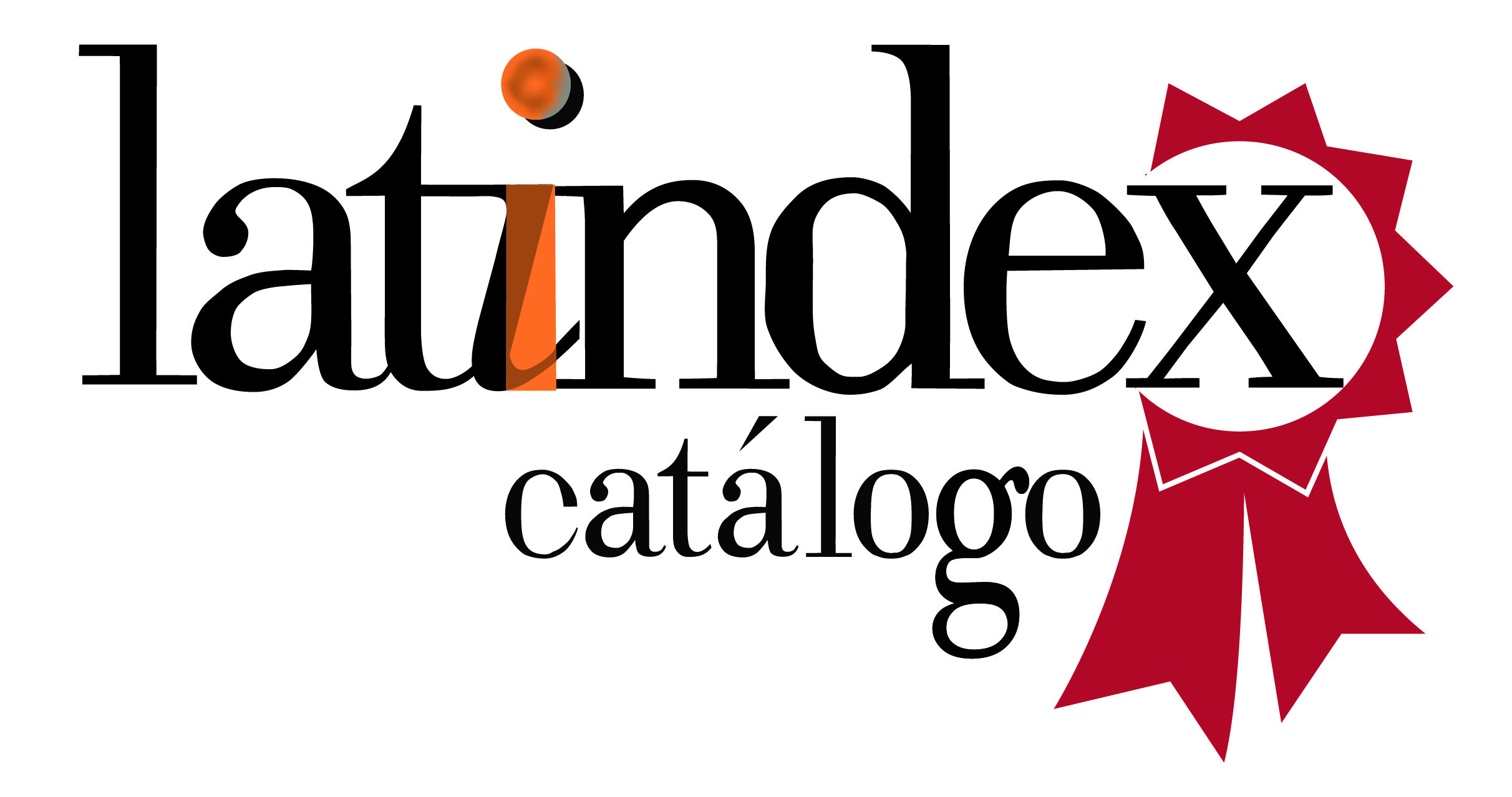Factores asociados al fenotipo delgado metabólicamente obeso en pobladores peruanos
DOI:
https://doi.org/10.52379/mcs.v6i3.259Palabras clave:
Obesidad, metabolismo, factores epidemiológicos, PerúResumen
Introducción: Los pacientes con el fenotipo delgado metabólicamente obeso (DMO) pueden presentar el mismo riesgo que los obesos clásicos para desarrollar enfermedades crónicas a largo plazo. No obstante, la prevalencia y los factores que se encuentran asociados este varía de acuerdo con la población estudiada. Objetivo: determinar la prevalencia y los factores se encuentran asociados al fenotipo DMO en el Perú. Métodos: Estudio analítico de corte transversal. Análisis secundario de la base de datos del estudio PERU MIGRANT. Los factores asociados que se consideraron fueron: edad (30-44 años, de 45-59 años, y 60 a más años), sexo, estado socioeconómico, nivel de educación, migración, tabaquismo, consumo de alcohol y nivel actividad física. Resultados: La prevalencia del fenotipo DMO fue de 32,23% (IC95% 27,61-37,10). En el análisis multivariable, el sexo masculino mostró 39% menor probabilidad de presentar el fenotipo DMO (PRa: 0,610; IC95% 0,428-0,869; p=0,006), en comparación con el sexo femenino. Mientras que, pertenecer a los grupos de edad entre 45-59 años y de 60 años a más presentó 110,5% (PRa: 2,105; IC95% 1,484-2,988; p<0,001) y 97,6% (PRa: 1,976; IC95% 1,270-3,075; p=0,003), respectivamente, mayor probabilidad de presentar DMO, en comparación con el grupo de 29-44 años. Conclusiones: El pertenecer al sexo femenino y a los grupos de edad de 45 a 59 y 60 años a más, aumentaron la probabilidad de presentar el fenotipo DMO. Se recomienda la realización de futuros estudios con prospectivos y con un tamaño de muestra mayor para confirmar dichos hallazgos, así como la inclusión de nuevas variables.
Descargas
Citas
Apovian CM. Obesity: definition, comorbidities, causes, and burden. Am J Manag Care. 2016;22(7 Suppl):s176-185. URL.
Malik VS, Willet WC, Hu FB. Nearly a decade on — trends, risk factors and policy implications in global obesity. Nat Rev Endocrinol. 2020;16(11):615–6. https://doi.org/10.1038/s41574-020-00411-y
Dai H, Alsalhe TA, Chalghaf N, Riccò M, Bragazzi NL, Wu J. The global burden of disease attributable to high body mass index in 195 countries and territories, 1990–2017: An analysis of the Global Burden of Disease Study. PLOS Medicine. 2020;17(7):e1003198. https://doi.org/10.1371/journal.pmed.1003198
Gómez-Zorita S, Queralt M, Vicente MA, González M, Portillo MP. Metabolically healthy obesity and metabolically obese normal weight: a review. J Physiol Biochem. 2021;77(1):175–89. https://doi.org/10.1007/s13105-020-00781-x
Pluta W, Dudzi?ska W, Lubkowska A. Metabolic Obesity in People with Normal Body Weight (MONW)—Review of Diagnostic Criteria. International Journal of Environmental Research and Public Health. 2022;19(2):624. https://doi.org/10.3390/ijerph19020624
Ding C, Chan Z, Magkos F. Lean, but not healthy: the “metabolically obese, normal-weight” phenotype. Curr Opin Clin Nutr Metab Care. 2016;19(6):408–17. https://doi.org/10.1097/MCO.0000000000000317
Mathew H, Farr OM, Mantzoros CS. Metabolic health and weight: Understanding metabolically unhealthy normal weight or metabolically healthy obese patients. Metab Clin Exp. 2016;65(1):73–80. https://doi.org/10.1016/j.metabol.2015.10.019
Benziger CP, Bernabé-Ortiz A, Gilman RH, Checkley W, Smeeth L, Málaga G, et al. Metabolic Abnormalities Are Common among South American Hispanics Subjects with Normal Weight or Excess Body Weight: The CRONICAS Cohort Study. PLoS One. 2015;10(11). https://doi.org/10.1371/journal.pone.0138968
Lee S-H, Han K, Yang HK, Kim H-S, Cho J-H, Kwon H-S, et al. A novel criterion for identifying metabolically obese but normal weight individuals using the product of triglycerides and glucose. Nutr Diabetes. 2015;5:e149. https://doi.org/10.1038/nutd.2014.46
Lee M-K, Rhee E-J, Kim MC, Moon BS, Lee JI, Song YS, et al. Metabolic Health Is More Important than Obesity in the Development of Nonalcoholic Fatty Liver Disease: A 4-Year Retrospective Study. Endocrinol Metab. 2015;30(4):522–30. https://doi.org/10.3803/EnM.2015.30.4.522
Jung CH, Lee MJ, Kang YM, Jang JE, Leem J, Hwang JY, et al. The Risk of Incident Type 2 Diabetes in a Korean Metabolically Healthy Obese Population: The Role of Systemic Inflammation. The Journal of Clinical Endocrinology & Metabolism. 2015;100(3):934–41. https://doi.org/10.1210/jc.2014-3885
Goday A, Calvo E, Vázquez LA, Caveda E, Margallo T, Catalina-Romero C, et al. Prevalence and clinical characteristics of metabolically healthy obese individuals and other obese/non-obese metabolic phenotypes in a working population: results from the Icaria study. BMC Public Health. 2016;16:248. https://doi.org/10.1186/s12889-016-2921-4
Jia A, Xu S, Xing Y, Zhang W, Yu X, Zhao Y, et al. Prevalence and cardiometabolic risks of normal weight obesity in Chinese population: A nationwide study. Nutr Metab Cardiovasc Dis. 2018;28(10):1045–53. https://doi.org/10.1016/j.numecd.2018.06.015
Wildman RP, Muntner P, Reynolds K, McGinn AP, Rajpathak S, Wylie-Rosett J, et al. The Obese Without Cardiometabolic Risk Factor Clustering and the Normal Weight With Cardiometabolic Risk Factor Clustering: Prevalence and Correlates of 2 Phenotypes Among the US Population (NHANES 1999-2004). Arch Intern Med. 2008;168(15):1617–24. https://doi.org/10.1001/archinte.168.15.1617
Yaghootkar H, Scott RA, White CC, Zhang W, Speliotes E, Munroe PB, et al. Genetic Evidence for a Normal-Weight “Metabolically Obese” Phenotype Linking Insulin Resistance, Hypertension, Coronary Artery Disease, and Type 2 Diabetes. Diabetes. 2014;63(12):4369–77. https://doi.org/10.2337/db14-0318
Scott RA, Fall T, Pasko D, Barker A, Sharp SJ, Arriola L, et al. Common Genetic Variants Highlight the Role of Insulin Resistance and Body Fat Distribution in Type 2 Diabetes, Independent of Obesity. Diabetes. 2014;63(12):4378–87. https://doi.org/10.2337/db14-0319
Miranda JJ, Gilman RH, García HH, Smeeth L. The effect on cardiovascular risk factors of migration from rural to urban areas in Peru: PERU MIGRANT Study. BMC Cardiovasc Disord. 2009;9:23. https://doi.org/10.1186/1471-2261-9-23
Whiting DR, Guariguata L, Weil C, Shaw J. IDF diabetes atlas: global estimates of the prevalence of diabetes for 2011 and 2030. Diabetes Res Clin Pract. 2011;94(3):311–21. https://doi.org/10.1016/j.diabres.2011.10.029
Stefan N. Metabolically Healthy and Unhealthy Normal Weight and Obesity. Endocrinol Metab (Seoul). 2020;35(3):487–93. https://doi.org/10.3803/EnM.2020.301
PERU MIGRANT Study | Baseline dataset [Internet]. figshare; 2016 [citado el 14 de marzo de 2021]. https://doi.org/10.6084/m9.figshare.3125005.v1
Wang B, Zhuang R, Luo X, Yin L, Pang C, Feng T, et al. Prevalence of Metabolically Healthy Obese and Metabolically Obese but Normal Weight in Adults Worldwide: A Meta-Analysis. Horm Metab Res. 2015;47(11):839–45. https://doi.org/10.1055/s-0035-1559767
Lee K. Metabolically obese but normal weight (MONW) and metabolically healthy but obese (MHO) phenotypes in Koreans: characteristics and health behaviors. Asia Pac J Clin Nutr. 2009;18(2):280–284. URL.
Alberti KGMM, Eckel RH, Grundy SM, Zimmet PZ, Cleeman JI, Donato KA, et al. Harmonizing the metabolic syndrome: a joint interim statement of the International Diabetes Federation Task Force on Epidemiology and Prevention; National Heart, Lung, and Blood Institute; American Heart Association; World Heart Federation; International Atherosclerosis Society; and International Association for the Study of Obesity. Circulation. 2009;120(16):1640–5. https://doi.org/10.1161/CIRCULATIONAHA.109.192644
Hajian-Tilaki K, Heidari B. Metabolically healthy obese and unhealthy normal weight in Iranian adult population: Prevalence and the associated factors. Diabetes Metab Syndr. 2018;12(2):129–34. https://doi.org/10.1016/j.dsx.2017.11.005
Poterico JA, Stanojevic S, Ruiz-Grosso P, Bernabe-Ortiz A, Miranda JJ. The Association Between Socioeconomic Status and Obesity in Peruvian Women. Obesity. 2012;20(11):2283–9. https://doi.org/10.1038/oby.2011.288
Bernabe-Ortiz A, Benziger CP, Gilman RH, Smeeth L, Miranda JJ. Sex Differences in Risk Factors for Cardiovascular Disease: The PERU MIGRANT Study. PLOS ONE. 2012;7(4):e35127. https://doi.org/10.1371/journal.pone.0035127
Escobar-Agreda S, Taype-Rondan A, Miranda JJ. Association between acculturation surrogates and alcohol consumption in rural-to-urban migrants: The PERU MIGRANT study. Journal of Migration and Health. 2021;3:100015. https://doi.org/10.1016/j.jmh.2020.100015
Boniface S, Kneale J, Shelton N. Drinking pattern is more strongly associated with under-reporting of alcohol consumption than socio-demographic factors: evidence from a mixed-methods study. BMC Public Health. 2014;14(1):1297. https://doi.org/10.1186/1471-2458-14-1297
Hyun Y j., Koh S j., Chae J s., Kim J y., Kim O y., Lim H h., et al. Atherogenecity of LDL and Unfavorable Adipokine Profile in Metabolically Obese, Normal-weight Woman. Obesity. 2008;16(4):784–9. https://doi.org/10.1038/oby.2007.127
Mostafa H, Amin AM, Teh C-H, Murugaiyah VA, Arif NH, Ibrahim B. Plasma metabolic biomarkers for discriminating individuals with alcohol use disorders from social drinkers and alcohol-naive subjects. J Subst Abuse Treat. 2017;77:1–5. https://doi.org/10.1016/j.jsat.2017.02.015
Murphy SE, Park SL, Balbo S, Haiman CA, Hatsukami DK, Patel Y, et al. Tobacco biomarkers and genetic/epigenetic analysis to investigate ethnic/racial differences in lung cancer risk among smokers. npj Precision Onc. 2018;2(1):1–10. https://doi.org/10.1038/s41698-018-0057-y
Carrillo-Larco RM, Miranda JJ, Gilman RH, Checkley W, Smeeth L, Bernabe-Ortiz A, et al. The HOMA-IR Performance to Identify New Diabetes Cases by Degree of Urbanization and Altitude in Peru: The CRONICAS Cohort Study. Journal of Diabetes Research. 2018;2018:e7434918. https://doi.org/10.1155/2018/7434918
Miranda JJ, Gilman RH, Smeeth L. Differences in cardiovascular risk factors in rural, urban and rural-to-urban migrants in Peru. Heart. 2011;97(10):787–96. https://doi.org/10.1136/hrt.2010.218537
Descargas
Publicado
Número
Sección
Licencia
Derechos de autor 2022 Jamee Guerra Valencia, Jenny Raquel Torres Malca, Jesus E. Talavera, Fiorella E. Zuzunaga-Montoya, Jhony Alberto De La Cruz Vargas , Víctor Juan Vera-Ponce

Esta obra está bajo una licencia internacional Creative Commons Atribución 4.0.











